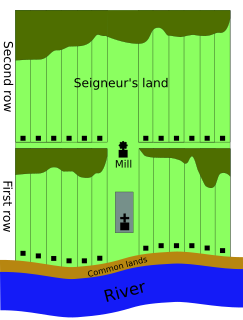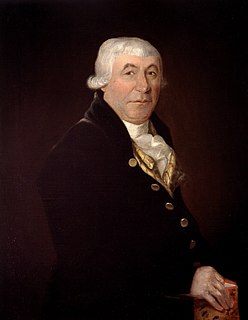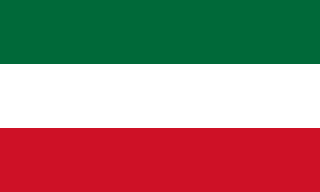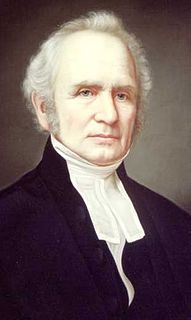Related Research Articles

The Province of Canada was a British colony in North America from 1841 to 1867. Its formation reflected recommendations made by John Lambton, 1st Earl of Durham, in the Report on the Affairs of British North America following the Rebellions of 1837–1838.
The Quebec Act 1774, formally known as the British North America (Quebec) Act 1774, was an act of the Parliament of Great Britain setting procedures of governance in the Province of Quebec. The act's principal components were:

The Canadas is the collective name for the provinces of Lower Canada and Upper Canada, two historical British colonies in present-day Canada. The two colonies were formed in 1791, when the British Parliament passed the Constitutional Act, splitting the colonial Province of Quebec into two separate colonies. The Ottawa River formed the border between Lower and Upper Canada.

The Parliament of Canada is the federal legislature of Canada, seated at Parliament Hill in Ottawa, and is composed of three parts: the monarch, the Senate, and the House of Commons. By constitutional convention, the House of Commons is dominant, with the Senate rarely opposing its will. The Senate reviews legislation from a less partisan standpoint and may initiate certain bills. The monarch or her representative, normally the governor general, provides royal assent to make bills into law.
From 1896 known as The Clergy Endowments (Canada) Act 1791, the statute passed at Westminster in the 31st year of George III, and itemised as chapter 31, was commonly known as the Constitutional Act 1791. It was an Act of the Parliament of Great Britain.

The manorial system of New France, known as the seigneurial system, was the semi-feudal system of land tenure used in the North American French colonial empire.

The Château Clique, or Clique du Château, was a group of wealthy families in Lower Canada in the early 19th century. They were the Lower Canadian equivalent of the Family Compact in Upper Canada. They were also known on the electoral scene as the Parti bureaucrate.

The Province of Quebec was a colony in North America created by Great Britain in 1763 after the Seven Years' War. During the war, Great Britain's forces conquered French Canada. As part of terms of the Treaty of Paris peace settlement, France gave up its claim to Canada and negotiated to keep the small but rich sugar island of Guadeloupe instead. By Great Britain's Royal Proclamation of 1763, Canada was renamed the Government of Quebec. The new British province extended from the coast of Labrador on the Atlantic Ocean, southwest through the Saint Lawrence River Valley to the Great Lakes and beyond to the confluence of the Ohio and Mississippi Rivers. Portions of its southwest were later ceded to the young United States in the Treaty of Paris (1783) at the conclusion of the American Revolution, although the British maintained a military presence there until 1796. In 1791, the territory north of the Great Lakes was divided into Lower Canada and Upper Canada.
The British North America Act, 1840, also known as the Act of Union 1840, was approved by Parliament in July 1840 and proclaimed February 10, 1841, in Montreal. It abolished the legislatures of Lower Canada and Upper Canada and established a new political entity, the Province of Canada to replace them. The Act was similar in nature and in goals to the other Acts of Union enacted by the British Parliament.

Events from the year 1789 in Canada.

The Parti canadien or Parti patriote was a primarily francophone political party in what is now Quebec founded by members of the liberal elite of Lower Canada at the beginning of the 19th century. Its members were made up of liberal professionals and small-scale merchants, including François Blanchet, Pierre-Stanislas Bédard, John Neilson, Jean-Thomas Taschereau, James Stuart, Louis Bourdages, Denis-Benjamin Viger, Daniel Tracey, Edmund Bailey O'Callaghan, Andrew Stuart and Louis-Joseph Papineau.
Clergy reserves were tracts of land in Upper Canada and Lower Canada reserved for the support of "Protestant clergy" by the Constitutional Act of 1791. One-seventh of all surveyed Crown lands were set aside, totalling 2,395,687 acres (9,695 km2) and 934,052 acres (3,780 km2) respectively for each Province, and provision was made to dedicate some of those reserved lands as glebe land in support of any parsonage or rectory that may be established by the Church of England. The provincial legislatures could vary or repeal these provisions, but royal assent could not be given prior to such passed bills having been laid before both houses of the British Parliament for at least thirty days.

The Rebellion Losses Bill was a controversial law enacted by the legislature of the Province of Canada in 1849. Its passage and subsequent royal assent by the Governor General, James Bruce, 8th Earl of Elgin makes the bill a landmark piece of legislation in Canadian political history.
The constitutional history of Canada begins with the 1763 Treaty of Paris, in which France ceded most of New France to Great Britain. Canada was the colony along the St Lawrence River, part of present-day Ontario and Quebec. Its government underwent many structural changes over the following century. In 1867 Canada became the name of the new federal Dominion extending ultimately from the Atlantic to the Pacific and the Arctic coasts. Canada obtained legislative autonomy from the United Kingdom in 1931, and had its constitution patriated in 1982. Canada's constitution includes the amalgam of constitutional law spanning this history.

Sir John Beverley Robinson, 1st Baronet, was a lawyer, judge and political figure in Upper Canada. He was considered the leader of the Family Compact, a group of families which effectively controlled the early government of Upper Canada.

Beginning with the 1763 Treaty of Paris, New France, of which the colony of Canada was a part, formally became a part of the British Empire. The Royal Proclamation of 1763 enlarged the colony of Canada under the name of the Province of Quebec, which with the Constitutional Act 1791 became known as the Canadas. With the Act of Union 1840, Upper and Lower Canada were joined to become the United Province of Canada.

Jean-Baptiste-Éric Dorion was a journalist and political figure in Canada East.
The Honourable Edward Hale, D.C.L. was a Quebec businessman and political figure. Chacellor of Bishop's University and significant figure to Bishop's College School.
The Royal Commission for the Investigation of all Grievances Affecting His Majesty's Subjects of Lower Canada was established 7 years after the publication of the report of a Select Committee of the House of Commons on the Civil Government of Canada, which had recommended important constitutional changes that were never effected.

The Parliament of the Province of Canada was the legislature for the Province of Canada, made up of the two regions of Canada West and Canada East.